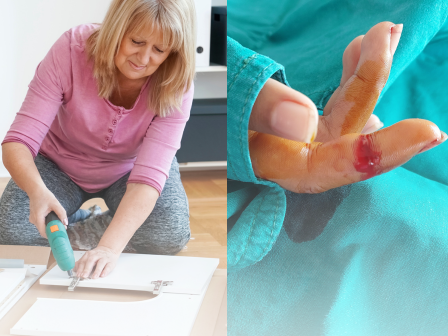When a Home Tool Turns Hazardous: What DIYers and Homeowners Should Know About a Product Injury
For many homeowners, fixing things yourself is a source of pride. Whether it’s a weekend project or a small repair, you expect the tools in your hands to work safely and reliably. But what happens when the tool you trusted suddenly fails—and leaves you injured? A product injury can be serious.
The truth is, tools aren’t supposed to betray that trust. Safety isn’t optional. It’s a basic promise that every manufacturer owes to consumers. When that promise is broken, it’s not just an accident—it’s a failure of responsibility.
Why Product Safety Matters at Home
Every product on the shelf should meet basic safety and performance standards before it ever reaches your home. Unfortunately, shortcuts in design, manufacturing, or quality control sometimes slip through. And when they do, everyday people pay the price.
Hazards can show up in familiar ways:
Collapsing ladders that give way under normal use. I have handled these cases. They bend when they shouldn’t or come apart even when brand new.
Power tools with faulty switches or missing guards. My clients have lost fingers too many times with such products.
Electrical equipment that sparks, overheats, or shocks. Sadly, one client we represented died from being shocked by a furnace.
Protective gear that fails to provide real protection. One of my clients suffered near fatal injuries from a failed harness.
Products that don’t meet safety expectations aren’t just inconvenient—they’re dangerous.
The Cost of Cutting Corners Leads to Product Injury
When manufacturers fail to prioritize safety, it creates ripple effects:
People are harmed. A product injury at home can be life-changing, from broken bones to burns or permanent disability.
Trust is broken. Families begin to doubt the safety of the products they rely on every day.
Accountability is required. Companies that don’t comply with safety standards not only expose consumers to danger but also risk financial and reputational fallout.
For the individual consumer, though, the main concern is simple: you bought a tool expecting it to work safely. If it didn’t, the fault isn’t yours.
What You Should Do If You Suffer a Product Injury ✅
If you’re hurt by a home product, there are steps you can take to protect yourself and your rights:
Get medical help immediately. Even small injuries can mask something more serious.
Save the product. Don’t throw it away or try to fix it—it could be vital evidence.
Document everything. Take pictures of the product, the packaging, your injuries, and the place it happened.
Keep receipts and manuals. Documents help show how and when the product entered your home – a critical component that must be proved.
Talk to a lawyer. Product liability law exists for a reason: to hold manufacturers accountable when they put unsafe products in consumers’ hands.
We’re Ready to Listen to You
From Self-Blame to Empowerment
When a tool injures you, it’s easy to wonder if you should have been more careful. But remember: safety is a standard, not a luxury. You’re entitled to expect that the products in your home are designed and built to protect you, not put you at risk.
At Shannon Law Group, we stand with homeowners and DIYers who are hurt by defective tools and unsafe products. Because when a product fails, you shouldn’t carry the blame alone—and you don’t have to. We are here to listen. You’ll work directly with Chad Shannon to review what you’ve experienced and decide on the next step forward.
Call us at 412-204-7103 or click and complete the form at the bottom of our homepage.


